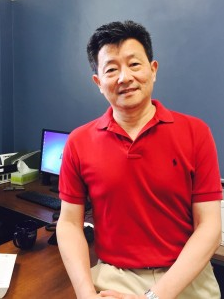应600cc大白菜官网语言学研究中心邀请,美国宾夕法尼亚州立大学Ning Yu教授将为我院师生举办两场道德隐喻系统研究的讲座。欢迎大家积极参加!
具体讲座信息如下:
主讲人:於宁 教授
地 点: Zoom会议ID : 92127672812
Zoom会议链接:https://psu.zoom.us/j/92127672812
主办单位:600cc大白菜官网
讲座一 The Moral Metaphor System and Beyond (I)
时间:2022年6月9日 19:30-21:30 (北京时间)
讲座二 The Moral Metaphor System and Beyond (II)
时间:2022年6月10日 19:30-21:30 (北京时间)
主讲人简介
Ning Yu is Professor of Applied Linguistics and Asian Studies at The Pennsylvania State University. His research interests lie in the relationship between language, culture, and cognition, cognitive linguistics, and the cognitive approach to metaphor studies. His publications include The Contemporary Theory of Metaphor: A Perspective from Chinese (Benjamins 1998), The Chinese HEART in a Cognitive Perspective: Culture, Body, and Language (de Gruyter 2009), and From Body to Meaning in Culture: Papers on Cognitive Semantic Studies of Chinese (Benjamins 2009). His new monograph, The Moral Metaphor System: A Conceptual Metaphor Approach, is forthcoming from Oxford University Press in July, 2022.
讲座内容摘要
In a series of two talks, Ning Yu will present some contents from his new monograph The Moral Metaphor System: A Conceptual Metaphor Approach, to be published by Oxford University Press (forthcoming July 21, 2022). This book investigates moral metaphors in English and Chinese, applying conceptual metaphor theory to a comparative study of the linguistic manifestation of the moral metaphor system rooted in the domains of bodily and physical experience. He sheds light on the metaphorical nature of moral cognition and how it is systematically manifested in language, and explores the potential commonalities that define moral cognition in general, as well as the differences that characterize distinct cultures. The moral metaphor system under study is taken as consisting of three major subsystems, named in a shorthand fashion as “physical”, “visual”, and “spatial”. The study is characterized by two keywords: system and systematicity. The former refers to the fact that metaphors (conceptual and linguistic) are connected within networks, and the latter to the need for those metaphors to be studied in such networks.
In his first talk, Yu focuses on the physical subsystem of the moral metaphor system as an example of how he conducts linguistic descriptions and analyses for this study. This subsystem, consisting of moral-physical metaphors, can be summarized by a generic conceptual metaphor MORALITY IS PHYSICALITY. Those moral-physical metaphors have five pairs of source concepts: BEAUTIFUL and UGLY, STRONG and WEAK, SOUND and ROTTEN, WHOLE and BROKEN, HEALTHY and ILL, mapped onto the target concepts MORAL and IMMORAL within the subsystem. Yu also puts the complete moral metaphor system into a holistic perspective, examining the moral metaphor system as a whole, constructing a general model for the analysis of both source and target frame structures of the conceptual metaphors in the moral metaphor system. This model displays the core elements and relations in the frame structures, with constants and variables specified.
In his second talk, Yu examines the relationship between bodily, cultural, and linguistic experiences and analyzes how they interact with metaphorical conceptualization, citing some linguistic evidence, both qualitative and quantitative, and multimodal evidence, showing the possible impact of linguistic experience on conceptual system and cultural experience. In particular, two general issues are discussed concerning the relations between language and thought, and between language and culture, emphasizing the possible impact of the former on the latter. Regarding these two issues, Yu discusses the possibility of conventional conceptual patterns being inherited by individual speakers through their linguistic experience learning and using salient conventional linguistic patterns, and shows the possibility of linguistic experience influencing cultural experience when salient conventionalized linguistic expressions motivate and inspire the creation of cultural artefacts.

600cc大白菜官网语言学研究中心
2022年6月6日